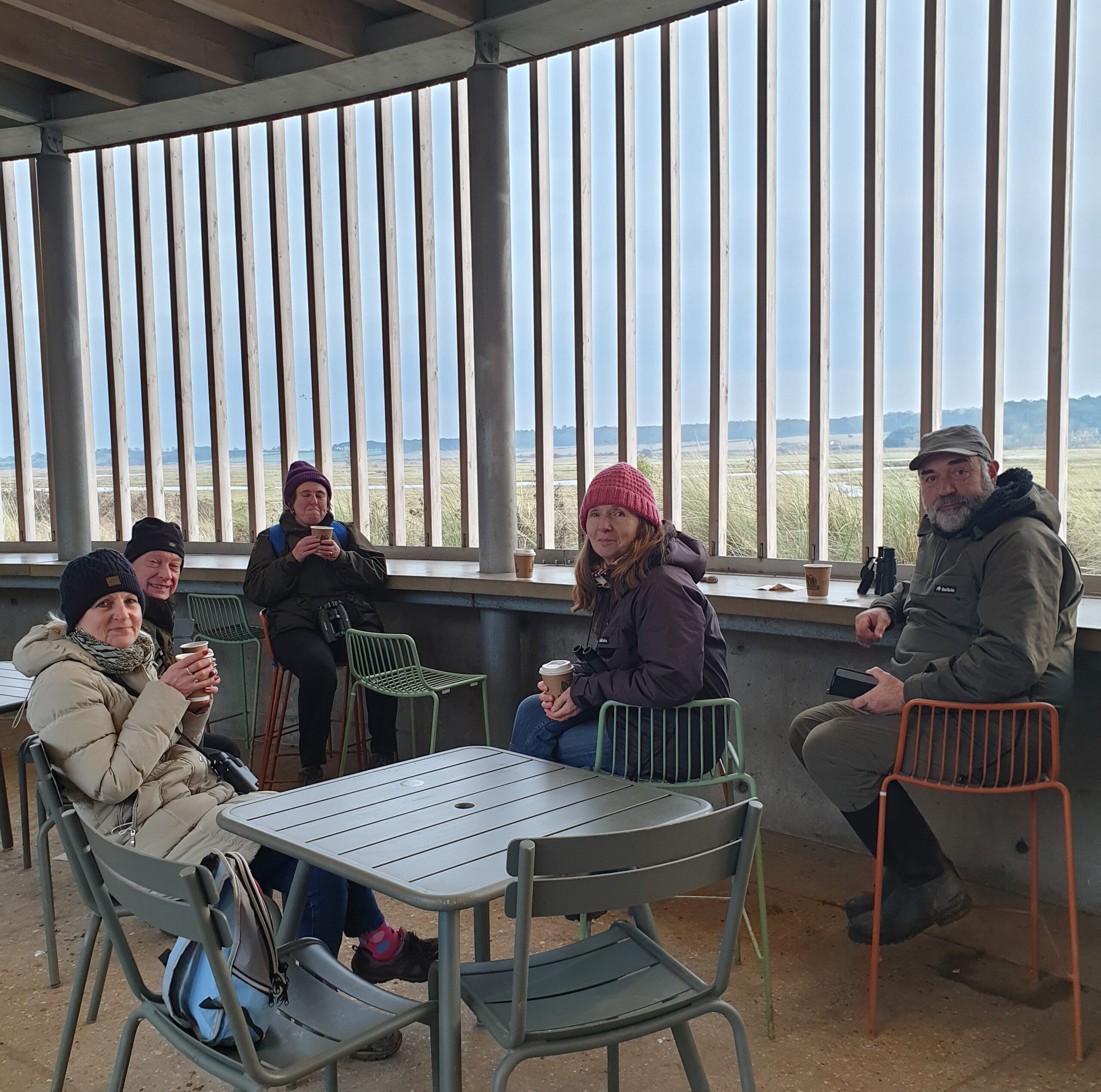Our first group trip of the new year took place on Sunday 16th January and saw 23 members gather by The Lookout at the north end of Lady Anne’s Drive. As we assembled we could see and hear thousands of Pink-footed Geese on the fresh marsh. This area is a traditional roost site for the geese in winter and usually the flocks fly in to roost as dusk falls. However, today was the day before a full moon and so the usual pattern was reversed. Around a full moon the geese often feed under moonlight at night and then roost during the day. Although on their roost the Pinks were pretty noisy and groups were continually flying inland to feed again. Brent Geese were also seen distantly flighting from Quarles Marsh and also heading inland.
We began by walking along the Drive and viewing the birds on the fresh marsh. In recent years the Holkham Estate has done some good conservation work here including re-excavating some of the ghost creeks and gullies that were present when the land was saltmarsh before it was reclaimed in the 18th Century. Naturally these features are wet in winter and consequently are very attractive to ducks and waders. Over a thousand Wigeon were present together with smaller numbers of Teal, Shoveler and Mallard. Waders were represented by Curlews, Black-tailed Godwits, Redshanks and a single Ruff. We also saw a group of four Grey Partridge ; Lady Anne’s Drive is a good spot to see this species.
Out to the beach and our main quarry was the small group of wintering Shorelarks present since the autumn. In most years they are faithful to an area east of Holkham Gap which is cordoned off to prevent disturbance. However, since high tides the week before they have been wide ranging and elusive. We decided to head west to look for them and to concentrate on areas without people and dogs. Not an easy task on a Sunday afternoon ! As we walked we scanned the sea. It was fairly quiet but a group of 20 Common Scoters contained at least two Velvet Scoters and we also saw about half a dozen Eiders. It was cold in a strengthening south-westerly breeze so we kept moving. As we turned towards the pines we caught sight of some passerines flying low across the beach. They landed about 200 yards away on a shingle patch. Bingo ! Four Shorelarks accompanied by the same number of Snow Buntings. They began feeding and with a careful approach we got to within 25 yards of them and enjoyed fantastic views. The Shorelarks were new birds for some of us and everyone enjoyed seeing the characteristic black and yellow head pattern of these elegant mountain breeders. We left the birds to feed and hurried into the shelter of the pines.
The woods were quiet but we arrived at the Joe Jordan hide which gives great views over the fresh marsh. The target birds here were Russian White-fronted Geese and it didn’t take us long to find them. Compact grey geese with a bold white frons (that gives them their name), striking black belly patches, orange legs and pinkish orange bills. About 50 birds were present threaded through a flock of Pinks. A Great White Egret here was our third of the afternoon and a Marsh Harrier floated past. Time was passing so we walked back along the track to The Lookout enjoying views of Little Grebes on Salt’s Hole but little else as the light faded and the temperature dropped. It had been a very birdy and sociable few hours for us all and a welcome excursion after the privations of Covid.
Nick Parsons
